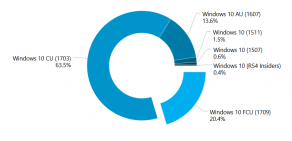DataViz Tip #8: Do Not Expose Your Private Data
 If you are used to creating charts in Excel, server-side libraries or other desktop software that produces static images, you may be comfortable with taking your private (often confidential) data and creating visualizations straight from it. After all, you control that end-users only see percentages or other aggregate values.
If you are used to creating charts in Excel, server-side libraries or other desktop software that produces static images, you may be comfortable with taking your private (often confidential) data and creating visualizations straight from it. After all, you control that end-users only see percentages or other aggregate values.
On the other hand, when your render charts on the client via libraries like amCharts, your private data travels over the network to the client browser as is. Even when you display the final visualization without exposing absolute values, the data is there for any curious mind to poke around.
But there’s nothing exactly confidential in my data, you may say. Sometimes even non-confidential data may lead to people making wrong assumptions when they can easily access it. For example, when I exposed absolute numbers used for calculating phone market shares in one of the AdDuplex reports it led to some journalists and enthusiasts misinterpreting these numbers as absolute total numbers of phones in use. Which obviously wasn’t true and led to unnecessary confusion.
That’s why it’s in your best interest to transform the data into the form close to what you will be displaying before sending it over the wire. You may find the tools to help you with that in our previous tip.